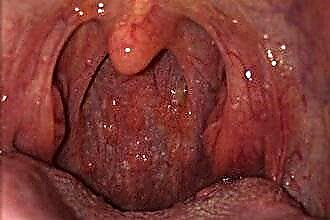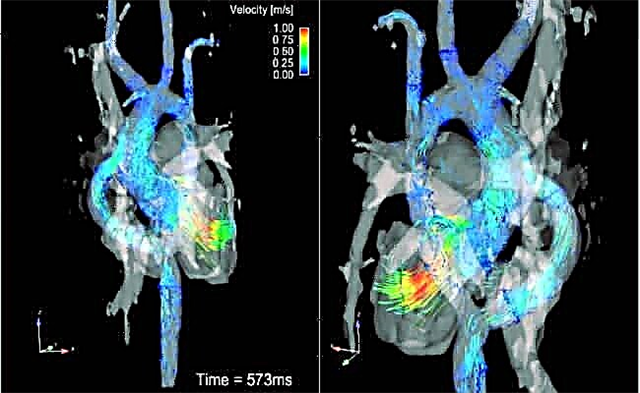The tonsils in the nasopharynx, like other structures of the lymphatic system, perform a protective function. They are the first barrier to the entry of infection into the body and take the greatest blow. To fight microbes, lymphoid tissue undergoes transformation, increasing in size. Having defeated the infection, the tonsils again become the same volume. As a result of a frequent attack of pathogens, lymphoid tissue can undergo hyperplasia, irretrievably increase and grow. In such cases, the question becomes, is it necessary to remove the adenoids?
 Note that adenoids are often diagnosed before the age of 7. At an older age, the pharyngeal tonsil gradually begins to scleroze and decrease in size, so the symptoms can disappear on their own. At what age adenoids are removed depends on the degree of proliferation of lymphoid tissue and the presence of complications. Whether it is worth removing adenoids before the age of three is a difficult question, since the immune system has not yet fully formed in young children, and the tonsils are a barrier to infection.
Note that adenoids are often diagnosed before the age of 7. At an older age, the pharyngeal tonsil gradually begins to scleroze and decrease in size, so the symptoms can disappear on their own. At what age adenoids are removed depends on the degree of proliferation of lymphoid tissue and the presence of complications. Whether it is worth removing adenoids before the age of three is a difficult question, since the immune system has not yet fully formed in young children, and the tonsils are a barrier to infection.
Usually, up to 3 years of age, the operation is not recommended, but in the presence of severe complications, an exception is made.
The decision on surgical intervention is made by the otolaryngologist based on the results of the examination and the dynamics of conservative treatment.
Symptomatically, the disease manifests itself:
- nasal congestion;
- snoring while sleeping;
- Difficulty breathing through the nose
- bad sleep, which makes the child moody and sleepy in the morning;
- inattention, which is due to insufficient oxygen supply to the brain.
Complications of adenoids
Parents should definitely consult a doctor to examine the child if symptoms of adenoids appear. In the case of overgrowth of lymphoid tissue, the risk of developing complications increases, which are an indication for surgery. If parents are in doubt whether it is necessary to remove the adenoids, you can contact another otolaryngologist to find out his opinion.
Cutting out the hypertrophied tissue is recommended when complications such as:
- hearing loss. Parents may notice that the child does not always respond when his name is called, or asks about something that indicates a deterioration in hearing function. This is due to the narrowing of the lumen of the auditory tube and the difficulty in passing air through it, as a result of which the tympanic membrane loses its physiological mobility. The child begins to hear poorly, school performance deteriorates and there is a danger on the street from moving cars, which the child may not hear;
 chronic pharyngitis, sinusitis and tonsillitis. Growth of the pharyngeal tonsil leads to obstructed ventilation of the nasopharynx, swelling of its mucous membrane and stagnation of mucous secretions. The persistence of the infection is fraught with its gradual spread to healthy tissues, affecting the palatine tonsils, the posterior pharyngeal wall and the larynx. An exacerbation of the disease manifests itself in a variety of symptoms, indicating widespread inflammation. The child may be bothered by a sore throat, paranasal sinuses, headache, cough, mucopurulent nasal discharge, and fever;
chronic pharyngitis, sinusitis and tonsillitis. Growth of the pharyngeal tonsil leads to obstructed ventilation of the nasopharynx, swelling of its mucous membrane and stagnation of mucous secretions. The persistence of the infection is fraught with its gradual spread to healthy tissues, affecting the palatine tonsils, the posterior pharyngeal wall and the larynx. An exacerbation of the disease manifests itself in a variety of symptoms, indicating widespread inflammation. The child may be bothered by a sore throat, paranasal sinuses, headache, cough, mucopurulent nasal discharge, and fever;- frequent adenoiditis (more than 4 times a year). The presence of infectious pathogens in the folds of the mucous membrane and lacunae can be complicated by adenoiditis, that is, inflammation of the growths of the amygdala. Clinically, the pathology manifests itself as a sore throat familiar to us with severe sore throat when swallowing and febrile hyperthermia. Only with adenoiditis, the nose is additionally blocked and mucous discharge is observed, because of which the child can breathe only through the mouth;
- hypersensitivity to allergens. Adenoids become a chronic focus of infection, leading to hypersensitization of the body and reducing the resistance of the immune system;
- fatigue, decreased memory and alertness. Insufficient or complete absence of nasal breathing does not provide a full supply of oxygen to the internal organs, as a result, they suffer from hypoxia. The brain is especially sensitive to oxygen starvation, which is symptomatic of dizziness, drowsiness, yawning, absent-mindedness and poor school performance. The child refuses to attend sports sections, since on the one hand he is constantly tired, on the other - difficult nasal breathing;
- adenoid face. Long-term breathing through the mouth leads to deformation of the facial skeleton (the upper jaw stretches, the bite changes, the nasal voice appears, and the child does not pronounce some letters well). Facial expression becomes dejected;
- Apnea is a serious complication that makes parents stay awake at night and monitor their baby's breathing. Periodically, during sleep, children may stop breathing for a few seconds, which worsens cerebral hypoxia and not only. Frequent apnea is life threatening;
- chronic otitis media. The emergence of a chronic infectious and inflammatory focus in the middle ear is due to insufficient ventilation of the ear cavity. This is due to the narrowing of the lumen of the Eustachian tube, through which the nasopharynx communicates with the ear. Poor ventilation encourages the growth of microorganisms in the middle ear, maintaining persistent inflammation. Otitis media can also impair hearing and spread the infection to the structures of the inner ear.
An increased tendency of children to develop otitis media is noted due to the narrower diameter of the Eustachian tube, the edema of which against the background of infectious diseases further impairs its patency.
Planning the operation
If the attending physician insists on surgical intervention, many parents are interested in when it is best to remove the adenoids. In otolaryngology, adenotomy refers to a simple and everyday intervention, the duration of which does not exceed 15 minutes. The operation is considered planned, so parents can slowly think about the doctor's proposal to remove the tonsil or consult with another ENT doctor whether to remove the adenoids or not.
To choose the most suitable period of the year for the operation, you need to understand that for colds and other infectious diseases, surgical interventions are not performed, since there is a high risk of complications due to low levels of immunity and the presence of infection. Children often get sick with ARVI during the cold season. In addition, we note that recovery in the presence of adenoids is extremely slow, so it is rather difficult to choose the day for the operation.
As for the summer period, hot weather predisposes to the multiplication of microbes, increasing the risk of developing infectious, including purulent, complications. Also, one cannot but take into account the increased bleeding during the hot period, therefore, the beginning of autumn is considered the optimal time to remove the tonsil.
Adenoids to heal or remove is decided based on the results of the diagnosis, in which the doctor determines:
- the presence of mucus and purulent deposits on lymphoid growths, because perhaps it is the discharge that complicates nasal breathing, and not the adenoids;
- smoothness of the tonsil surface. If the mucous membrane is stretched, shiny and even, it is worth suspecting inflammation of the lymphoid tissue - adenoiditis. In this case, the operation is postponed and drug therapy is prescribed to eliminate the inflammatory process. When the surface of the tonsil becomes uneven and wrinkled, it means that the swelling has decreased and you can plan to remove it.In addition, the presence of pain and hyperthermia in a child should be taken into account;
- the shade of the tonsil mucosa, on the basis of which the doctor also assesses the degree of inflammation and the chance of achieving a positive result from conservative methods.
Removal of adenoids is not performed:
- in the first month after vaccination, since immunological reactions occur in the body, which can temporarily reduce protection;
- against the background of an exacerbation of an infectious disease or with ARVI;
- with an increased tendency to allergies and severe bronchial asthma;
- with blood diseases, when coagulation is disturbed, which increases the risk of bleeding.

To protect the child from serious complications, a complete examination is necessary. It should also be understood that in the postoperative period, a temporary decrease in immune defense is possible, nasal congestion for two weeks and the release of blood crusts or mucus streaked with blood for about 20 more days.
You should not stand on the removal of the adenoids only because of their proliferation to the third degree, because the tonsils are able to shrink on their own. Their increase may be due to an infectious disease. At the same time, even second-degree adenoids can provoke the development of serious complications, so their removal is required.
Facts versus deletion
When removing the pharyngeal tonsil, you need to understand that this will cause a local decrease in the body's defense against microbes.
The child becomes more prone to infectious diseases, and the likelihood of developing allergic rhinitis, hay fever and tracheobronchitis increases.
The opinion that the child after the removal of the tonsils will become less painful has no evidence. The operation is performed not to reduce the incidence of acute respiratory viral infections, but to eliminate the cause of complications associated with hearing impairment or apnea.
When agreeing to surgery, parents should be aware that there is a risk of re-proliferation of lymphoid tissue.
The likelihood of relapse is higher in young children, since all processes in them occur at a faster rate, and the tonsils can grow up to 8 years old. Also, do not omit the fact of poor-quality removal of lymphoid growths by the surgeon. If a piece of hypertrophied tissue is not removed, it can become the basis for re-growth.
The effect of the operation depends on the experience of the surgeon and the method of intervention. Sometimes cases are recorded - after removal of the adenoids, nasal congestion and difficulty in nasal breathing remain. The fact is that the cause of these symptoms could not be the growth of the amygdala, but, for example, the curvature of the septum, chronic sinusitis or allergic rhinitis.
Ultimately, it must be remembered that the operation does not exclude the need to continue conservative treatment. A good effect is observed only with an integrated approach.
Treatment involves rinsing the throat, rinsing the nasal cavities, nasal instillation and breathing exercises. What remedies are used in the treatment?
- nasal lavage - Aqua Maris, Humer, No-salt, sea salt solution (3 g of salt per 220 ml of warm water), herbal decoction (chamomile, eucalyptus leaves, sage);
- nose drops - Protargol, Pinosol, Vibrocil, Kalanchoe juice.
Do not forget about immunomodulators (Immudon, IRS-19) and physiotherapeutic procedures (electrophoresis, laser). From preventive measures, attention should be paid to hardening procedures, physical exercises, frequent cleaning, airing the premises and sanatorium-resort recreation.

 chronic pharyngitis, sinusitis and tonsillitis. Growth of the pharyngeal tonsil leads to obstructed ventilation of the nasopharynx, swelling of its mucous membrane and stagnation of mucous secretions. The persistence of the infection is fraught with its gradual spread to healthy tissues, affecting the palatine tonsils, the posterior pharyngeal wall and the larynx. An exacerbation of the disease manifests itself in a variety of symptoms, indicating widespread inflammation. The child may be bothered by a sore throat, paranasal sinuses, headache, cough, mucopurulent nasal discharge, and fever;
chronic pharyngitis, sinusitis and tonsillitis. Growth of the pharyngeal tonsil leads to obstructed ventilation of the nasopharynx, swelling of its mucous membrane and stagnation of mucous secretions. The persistence of the infection is fraught with its gradual spread to healthy tissues, affecting the palatine tonsils, the posterior pharyngeal wall and the larynx. An exacerbation of the disease manifests itself in a variety of symptoms, indicating widespread inflammation. The child may be bothered by a sore throat, paranasal sinuses, headache, cough, mucopurulent nasal discharge, and fever;


